Have your students ask themselves, “How do I learn?” Recently we spoke to a teacher who was asking for help in preparing a summer project for a student who struggles with learning English. The teacher thinks she will be more successful if she understands how she learns.
How can I learn more effectively?
The teacher’s question is: “Do you have any ideas for my project? The title is: ‘How can I study more effectively?’ I am working with a girl who doesn’t know how to make the best use of her abilities. In addition, she is easily discouraged by her slow progress. So, I chose her for a summer study project, and I hope that she will find alternative ways to learn and absorb her lessons.”
Teaching method
We all learn in different ways. For example, some people need to see pictures and texts, some need to touch and feel, and others are better when listening. This post on learning styles and teaching English describes how people learn and suggests activities to suit each one.
Fortunately, because I teach with many types of games and activities, my lessons naturally appeal to all learning styles at one point or another. I usually build progressively from listening to speaking, then reading and writing. Because I use plenty of drills and games with repetition, even the slowest student manages to learn eventually! Praise is also essential since it boosts confidence and thus enhances learning.
In addition, I make lessons fun so that the child enjoys them and wants to come back for more. Usually, I involve parents by inviting them to an end-of-term show. This show also benefits the child, who becomes the centre of attention and feels like they have achieved something.
Finding out how you learn
In the next lesson, find out how your student learns best. Below are some typical questions to help a student discover how they learn. However, many people prefer a blend of learning styles.
1. What is your favourite book? One with lots of pictures and text, an audiobook, or an activity book with puzzles and labyrinths?
2. When working out a sum, do you write it down, say your calculations out loud, or trace the numbers in the air with your finger? And what about when you spell a word?
3. When you are waiting for a bus, do you look about, talk to someone, or fidget and walk up and down? These days most people would answer that they would use their phone, so you need to ask what they do with it, such as playing games, making a phone call, or reading.
4. How do you like to study? Do you prefer reading your coursebook and notes, being tested by answering questions out loud or making index cards for review?
5. How do you like to learn how something works? Have someone show you, work it out on your own, or read the instructions?
If you search online you should find some free tests relating to how you learn. For example, try searching for “what is my learning style?” I am not including links here because these things come and go.
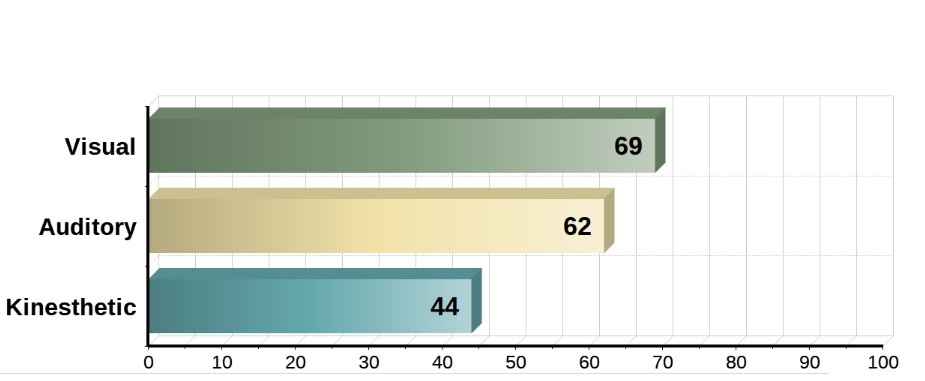
Most people are a blend of learning styles.
Study plan to help your student learn
Give your student a study plan for the summer. For example:
1. I will study 20 minutes every day. (20 minutes a day is much more powerful than one hour every three days.)
2. When I do my 20 minutes I will concentrate on the task and remove any distractions. Or, I will play music while I work since it helps me concentrate.
3. Keep some tasks simple, working on the basics until they are known, since there is no point putting fancy doorknobs on a door that doesn’t close properly in a house made of crumbling cement.
4. Revise every day because ‘repetition is the mother of skill’.
5. Use supporting materials that cater to the student, such as audio if they are good with listening, pictures and charts if they are visual, and craft projects if they are tactile. For example, a hands-on project might be to cut and paste body parts on a body and label them.
Combined approaches
I find that the best results come from the teacher repeating the words (auditory learner) in combination with pictures (visual learner) and using actions (kinaesthetic learners). First, pupils listen, look for and point to the correct pictures and do the actions. After that stage, we move to speaking skills where the kids repeat the words and do the actions. Next, I show the word in writing, and they copy them using a game from one of my ESL games books.
You might also like this blog on different learning styles.
All the best, Shelley
-
Sale Product on sale
 Plays and Skits for Teens
Plays and Skits for Teens€19.97Original price was: €19.97.€15.33Current price is: €15.33.Rated 5.00 out of 5 based on 1 customer rating -
 ESL Online Games€19.97Rated 5.00 out of 5 based on 4 customer ratings
ESL Online Games€19.97Rated 5.00 out of 5 based on 4 customer ratings -
Sale Product on sale
 Fun ESL Role-plays and Skits for Children
Fun ESL Role-plays and Skits for Children€19.97Original price was: €19.97.€15.33Current price is: €15.33.
Paperback books
All my books are also available in paperback from Amazon. Please visit my author page: Shelley Ann Vernon.
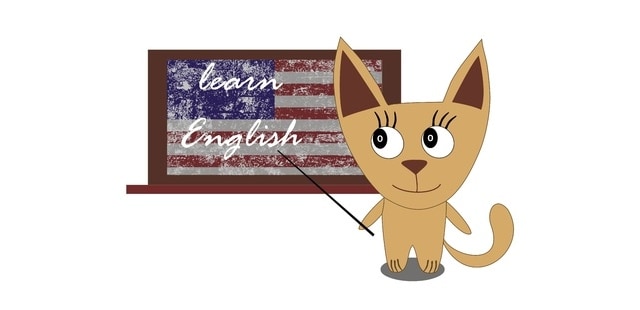
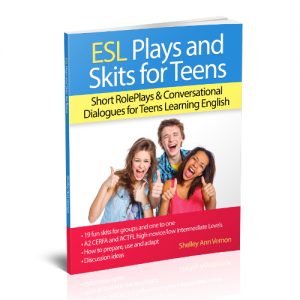
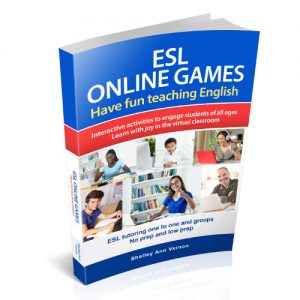
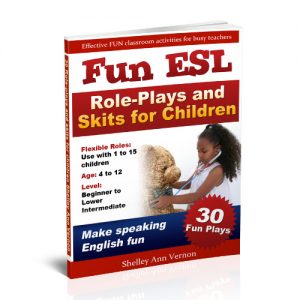
1 thought on “How do I Learn?”
Inspiring